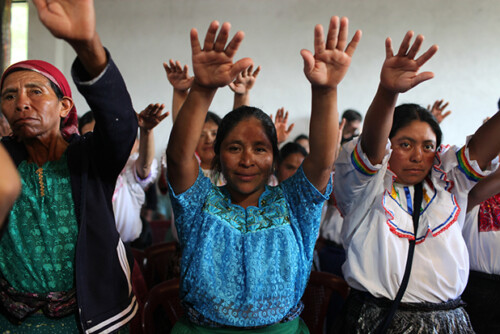The Breeding of Silk Politics
Today, the practice of Nosema monitoring is conducted in nearly the same manner as that of the late Meiji period, except with more sophisticated microscopes and computer screens. Male and female silkworms are still separated from each other at a juvenile stage, and fertilized females are still made to lay their eggs one to a square. These developments during the Meiji period show how the lives of this domesticated insect were scientized in a way that has made it possible to fully monitor them from egg to expiration. This was partly enabled as a result of growing interests among scientists in silkworm anatomy. For example, the scientists Toyama Kametaro and Ishiwatari Shitegane published a book on the dissection of the silkworm in 1896.1 Following this, Ishiwatari described a method for differentiating silkworm sexes in 1904. The history of silkworm sex differentiation is the subject of another project, but it must be mentioned here because it formed the foundation for a new kind of skilled women’s work, silkworm sexing.2
Indeed, scholarship on sericulture and weaving in premodern China shows that the notion of gendered silk work is hardly novel.3 Scholarly work on Tokugawa Japan has also shown how the work of silk-making has undergone a compartmentalization that divvied up expertise in ways that continued well through the Meiji period.4 However, this new seasonal female labor had developed especially to help separate male and female juvenile silkworms before they disappeared into the cocoons they spun around their bodies. Information about this skilled migrant labor remains elusive, considering how so much of the memory of this women’s work in the homes of farmers has gone unwritten, only to be passed down orally and re-recorded. This is in contrast to other work of an institutional kind that entered official or scientific records and publications. For instance, the present-day Kōgensha silkworm egg company in Gunma Prefecture notes on their website that the work of sexing silkworms grew around 1912, and that the majority of silkworm egg producers practiced the separation of males and females. The months of May and June were sometimes called the “blooming of parasols,” referring to the young women workers who traveled from village to village. Kōgensha reports that around 3000 women had once engaged in this seasonal work, at its peak, and that an advanced silkworm sexer could scan 15,000 heads of silkworms in a day.5
Sex differentiation techniques had also rested greatly upon earlier human efforts to monitor their insect wards; the particularities of disease articulated, if not accentuated, the lifecycle of Bombyx in a way that also accommodated detecting the possible presence of Nosema. The awareness of these nonhuman life histories concretized the work of separating male and female silkworm larvae in a way that strengthened ongoing interests in preventing random matings among adults and the waste of good eggs.
The limited success of silkworm husbandry, or sericulture, in the United States, has understandably placed more scholarly attention on the work of distributing and processing imported raw silk and constructing garments, home textiles, or utilitarian products.6 This is not to say that early American colonial period sericulture, or mulberry culture, has been ignored.7 However, the study of silk in North America following the industrial revolution has largely dwelled upon the consumption of silks, ranging from areas such as fashion to the plastics industries. These studies have interestingly shown how the moral call to direct the resources of raw silk and nylon to making parachutes and powder bags for the military put a literal run on stockings that comprised about 46 percent of consumed silk products at the time, and contributed to the gradual acceptance of bareleggedness and shorter hemlines in the country.8 Silk utility textiles used by the US army eventually gained the attention of the American public, as consumers, mainly women, took to department stores in reaction against the Japanese invasion of China as the Pacific War erupted. In 1938, the League of Women Shoppers organized a fashion show in Washington, D.C. entitled, “Life Without Silk: From Morning to Midnight in Cotton and Rayon,” to make a point that life could go on without Japanese silk. This well-attended event, which attracted about 600 audience members, elicited a counterprotest by women hosiery and textile workers, whose livelihoods depended on the production of fashion goods.9 The combination of aesthetics and ethics in this embattled tension between female consumers and factory workers has received scrutiny from historian Lawrence Glickman, who explains that this period of boycott overlapped with an austerity movement—the 1938 development of nylon (also called artificial silk) by DuPont notwithstanding—and a total embargo on Japanese products.10 The 1940 Science News-Letter (the predecessor of today’s Science News) may have put it best (next to an article on the rare flying lemur): the “World’s Silk Situation Snarled as if Kitten Had Ball.”11 This news analysis followed the pell-mell chain reaction of events following the US push to direct textiles from domestic use to the military, despite its contradictory dependence on silk from Japan, and, to a lesser extent, Italy. It also conveyed to its American readers how the Japanese government ordered domestic Japanese textile factories to contain at least 20 percent silk in their cotton, wool, and rayon to resolve their silk surplus. Japan’s desperate measure to consume silk domestically pointed to another contradiction, for silk was a fabric that common folk did not routinely wear.
Conclusion
The dilemma generated by the prioritization of the production of utilitarian goods in the United States and the embargo on silk and other textiles from Japan in the years preceding the United States’ engagement with war illustrates how the raw silk shortage resulted from a confluence of political, ethical, social, economic, and technological issues that seemed to have little to do with the actual harvest success of silk cocoons themselves. On the other side of the Pacific, the increasing yearly tonnage of cocoons produced by newly trained young men and especially women underscores how critical raw silk had become to Japan’s potential to express international superiority. Instead of studying silk consumption in and of itself, this study has taken into consideration the materiality of silk, in particular, the organisms involved in producing silk, and various facets of biological management and production associated with Bombyx and its “bugs.” This case has opened up a path for exploring a larger terrain of a global history of the multispecies, which requires an angle of analysis that recognize women as key players in the practical arts and science of sericulture. By tracing the silk thread to its biological construction as an excretion of the juvenile Bombyx, we have explored instead the constant tensions between human, insect, and its microbial bugs that fashioned the mass production of eggs in the modern period. Connected to these tensions included a struggle to identify and lay claim to the description of the pests in Europe and Japan that enjoined the creation of solutions and highly practical needs to reduce the prevalence of pébrine/biryūshibyō. While men, women, and children have long been important caretakers of the domesticated silkworm since at least, if not before, the premodern period, new skills and professions, both temporary and permanent, rallied around the multiple species to preserve or overcome. New scientific knowledge, policies, and institutions accommodated an awareness that epidemic outbreaks could be repetitive. With that, so, too, did space grow to verify and experiment with the microbes described earlier in France and Italy.
In the work of maintaining hygiene and health in silk work, it had become very scientifically clear how susceptible the domesticated silkworm was as a swarm insect. As something highly ephemeral and cared for in Japan, Bombyx could barely be categorized as a bug, in the sense of the unwanted pest. To abate the problems of pébrine and other problems, Meiji agricultural officials demanded a greater workforce that would use new skills to implement the scientific inspection of mother moths across Japan. In an answer to this call, a growing base of literate men and, in particular, women, stood ready to learn the work of microscopy, among other tasks connected to silkworm health. The formal and informal work of exterminating Nosema from the larger population of Bombyx mori in Japan signals to us a historical transformation of labor in the Meiji period, from the seasonal work of rearing silkworms in home nurseries to the work associated with the production of capital for more distant houses, or raw silk farms. This historical analysis of the multispecies, the pursuit of identifying Nosema, has helped bring to light reasons why the separation of male and female silkworms had particular importance for infectious disease control. This provides a new scenario for understanding how a science and labor force was designed around sexing the silkworm. While disease control and pedigree breeding were distinct activities, their scientization also foreshadows the development of a later silkworm nomenclature system that would be peppered with a grammar of racial thought.12
While woven wares may provide us with the most prominent images of mechanized silk production, this study has grounded the airiness of silk in greater “conversation” with nonhumans. Deconstructing the fibers of commercial silk products visible in the United States has shown a path that threads back to silkmoth eggs. This analysis has illuminated how the historical processes of defining not just the moth depended on defining at least one other unruly nonhuman organism in the early-twentieth century, while spurring new kinds of work. In short, scientists’ efforts to detect, describe, and prevent infectious diseases in silkworms and moths produced new material engagements among humans across three continents, Bombyx, and Nosema (and other pests). Continued analysis of the gaze placed upon the mother moth by male scientists policing the entry of Nosema in nurseries should allow for a deeper understanding of the role of science in the manipulation of sex and gender in sericulture, whether in relation to working women or silkworms.
- Kametaro Toyama and Shigetane Ishiwatari, Jikken santai kaibo: Fu sanbyo narabini kenbikyo shiyoho, (Tokyo: Fuzanbo, 1896). See also Shigetane Ishiwatari, Santai kaibo, (Fujioka-machi Gunma-ken: Mimata Aisaku, 1899); Lisa Onaga, “Toyama Kametaro and Vernon Kellogg: Silkworm Inheritance Experiments in Japan, Siam, and the United States, 1900–1912,” Journal of the History of Biology 43.2 (2010): 215–264. [↩]
- Shigetane Ishiwatari, “Sanji shiyū no hanbetsuhō,” Dainippon Sanshikaihō 145 (1904): 17-18; Shigetane Ishiwatari, “Sanji no shiyū kanbestu,” Sangyō Shimpō, 134 (1904): 456-457. This essay is the first step in outlining a project on silkworm sex differentiation. [↩]
- Francesca Bray, Technology and Gender: Fabrics of Power in Late Imperial China, (Berkeley: U of California P, 1997). [↩]
- Tessa Morris-Suzuki, The Technological Transformation of Japan: From the Seventeenth to the Twenty-First Century, (Cambridge; New York: Cambridge UP, 1994). [↩]
- K. Miyazawa, Personal communication. 30 Sept. 2008; see also http://www.kougensha.com/sericulture/history/technology/technology.html. This history of the biology of silkworm sexing is the subject of a separate project. [↩]
- Jacqueline Field, Marjorie Senechal, and Madelyn Shaw, American Silk, 1830-1930: Entrepreneurs and Artifacts, (Lubbock: Texas Tech UP, 2007). [↩]
- For example, Emily Pawley, “Coining Foliage into Gold: Speculation, Value, and the Mulberry Bubble, 1826-1839,” Paper presentation at Plants, Animals, and Ownership: Innovation and Intellectual Property Protection in Living Organisms Since the 18th Century workshop, Yale University, June 3-5, 2011. [↩]
- See W. R. Wadsworth, “The Future of Silk in the Hosiery Industry,” Journal of the Textile Institute Proceedings 43.1 (1952): 94–9; William W. Lockwood, “Economics of a Silk Boycott,” Far Eastern Survey 6.22 (1937): 247–251; Lauren Olds, “World War II and Fashion: The Birth of the New Look,” Constructing the Past 2.1 (2001): 47–64. The issue of bare legs also drew great attention in East Asia. See also Dorothy Ko, Cinderella’s Sisters: A Revisionist History of Footbinding, (Berkeley: U of California P, 2005); Hsiao-pei Yen, “Body Politics, Modernity and National Salvation: The Modern Girl and the New Life Movement,” Asian Studies Review 29.2 (2005): 165–186. [↩]
- “Shoppers Plan Fashion Show: ‘Life Without Silk’ Theme of Women’s League Planned Exhibit,” Washington Post 19 Jan. 1938: 13; Lockwood 1937. [↩]
- Lawrence B. Glickman, “‘Make Lisle the Style’: The Politics of Fashion in the Japanese Silk Boycott, 1937-1940,” Journal of Social History 38.3 (2005): 573–608. Effectually through the expiration of the 1911 Treaty of Trade and Navigation, as well as the establishment of the Export Control Act of 1940 and its extension in 1942. See also Nathan M. Becker, “The Anti-Japanese Boycott in the United States,” Far Eastern Survey 8.5 (1939): 49–55. [↩]
- “World’s Silk Situation Snarled as If Kitten Had Ball.” Science News-Letter 38.22 (1940): 340. [↩]
- This is detailed in my book manuscript, Anatomy of a Hybrid (working title). [↩]





